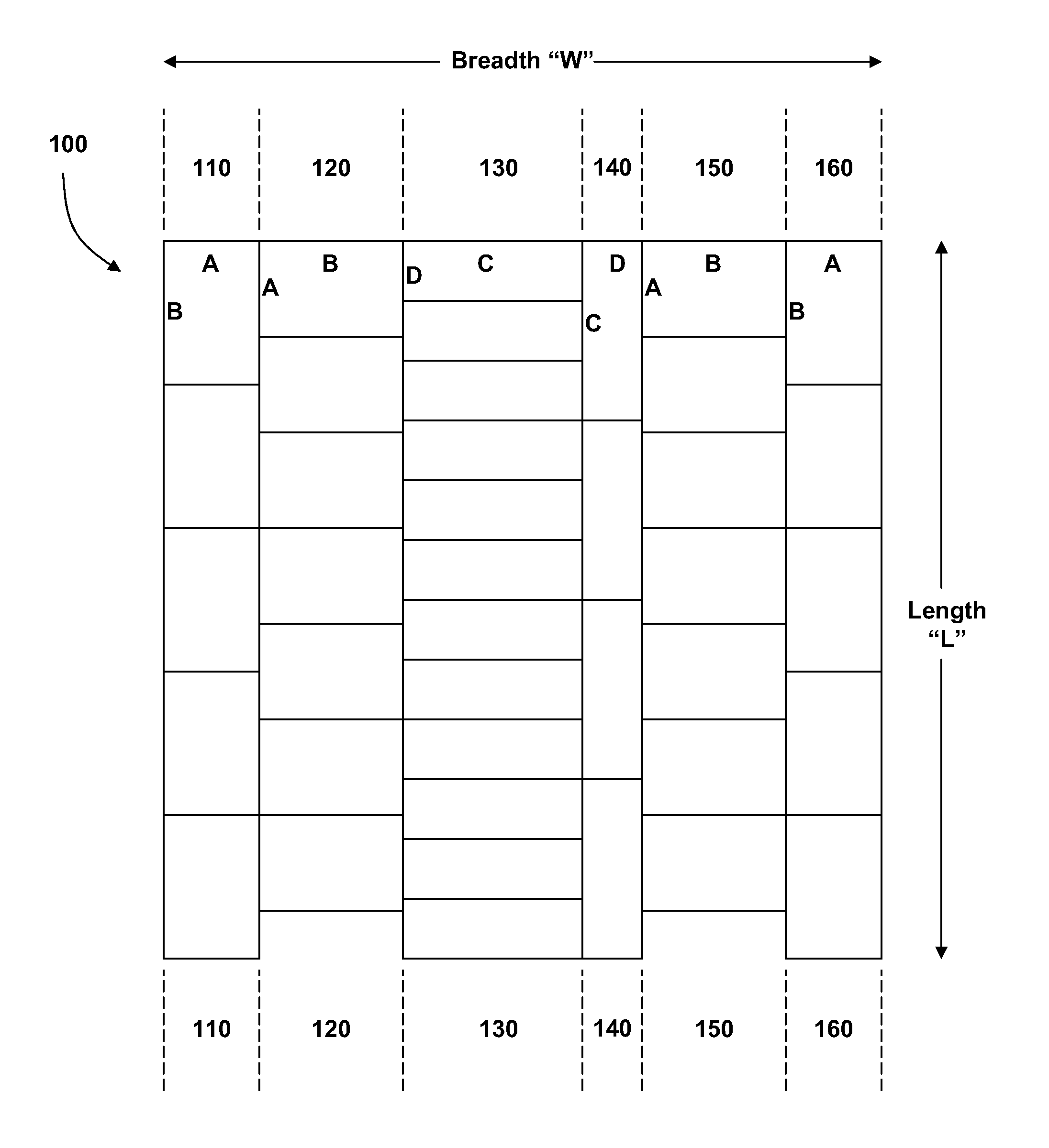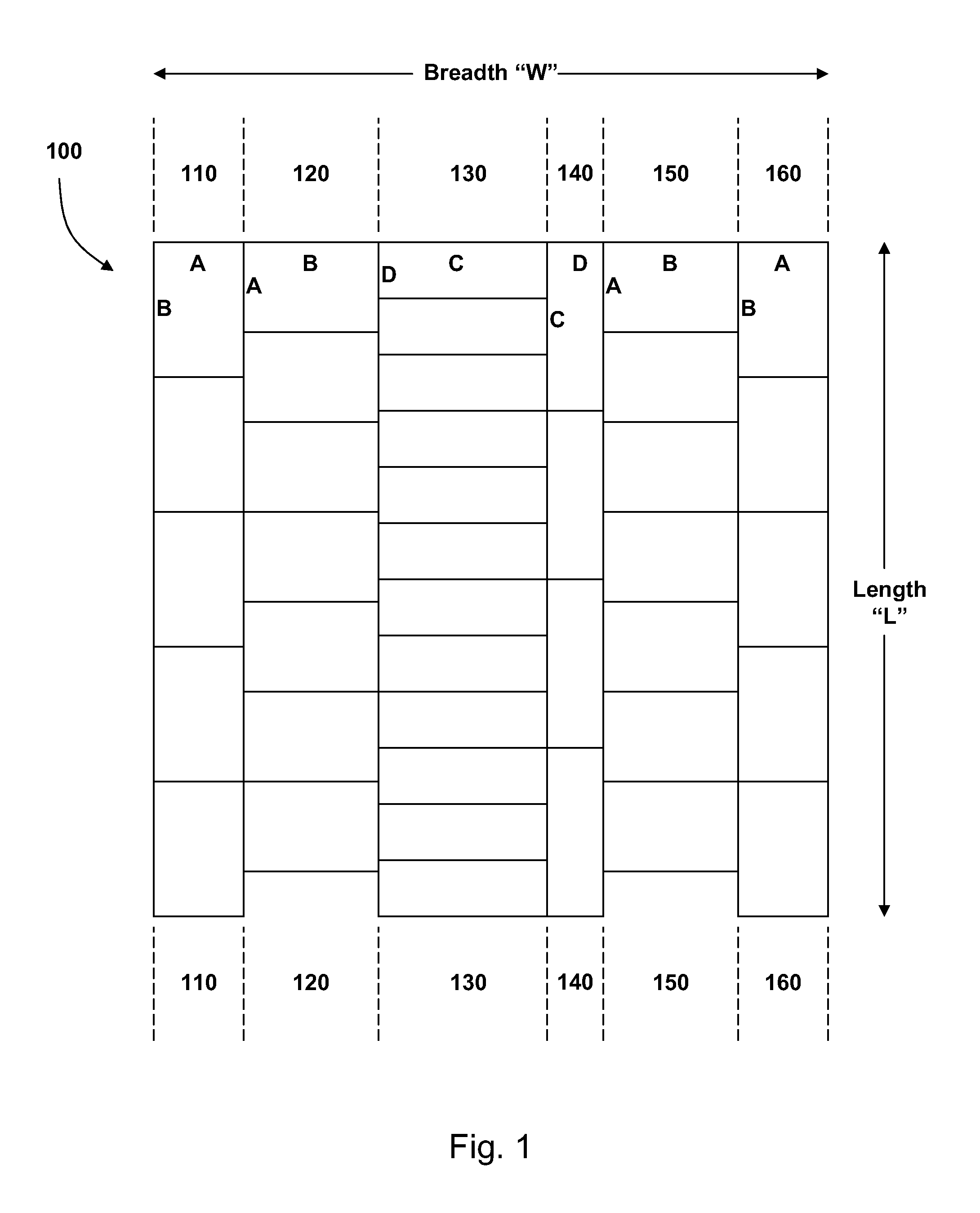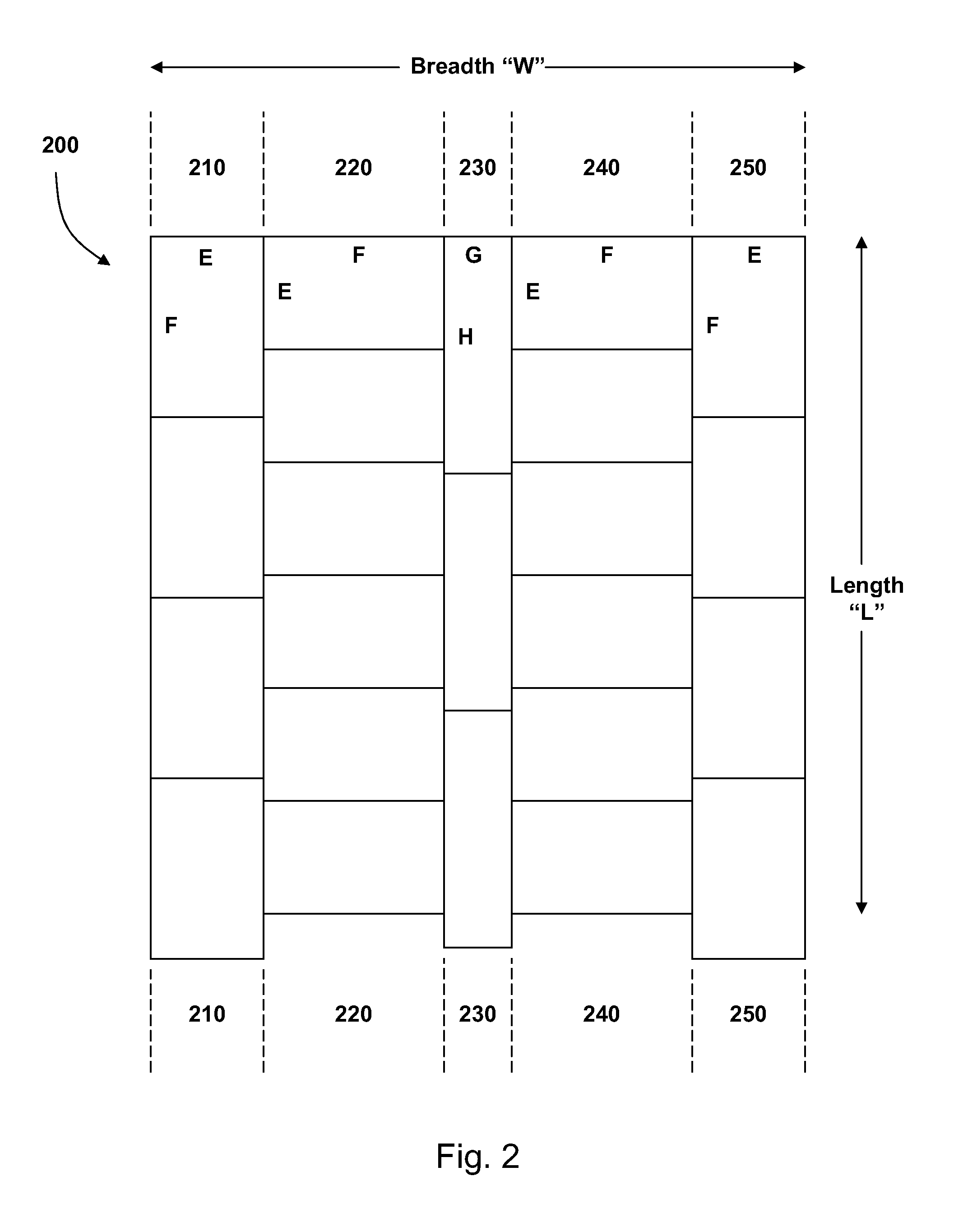Methods of cutting and installing carpet tiles
a carpet and installation method technology, applied in aircraft crew accommodation, weaving, manufacturing tools, etc., can solve the problems of unnecessarily high cost, difficult removal and replacement of damaged carpet sections, and particularly harsh environment of carpeting, so as to reduce the number of tile sizes, reduce carpet waste, and reduce weight
- Summary
- Abstract
- Description
- Claims
- Application Information
AI Technical Summary
Benefits of technology
Problems solved by technology
Method used
Image
Examples
example 1
[0054]A carpet to be installed in a cabin of a Boeing 737-700 Series aircraft requires carpet to be laid in six sections (110, 120, 130, 140, 150 and 160) as illustrated in FIG. 1 (not drawn to scale for this Example). Seat tracks are located lengthwise in the cabin between sections 110 and 120, 120 and 130, 140 and 150 and 150 and 160. Emergency lighting tracks are located lengthwise in the cabin between sections 130 and 140.
[0055]The configuration of this example requires the following widths:
[0056]
SectionWidth (inches)1101812019.25130321401415019.2516018
[0057]Note that these sections have four different width requirements (18, 19.25, 32 and 14 inches) and that sections 110 and 160 have the same width and sections 120 and 150 have the same width.
[0058]Carpet tiles can be sized for installation in this cabin using only two different sizes of tiles by sizing one tile to have a length of 18″ and width of 19.25″ and another tile to have a length of 32″ and width of 14″. The 18×19.25 t...
example 2
[0059]A trial installation was completed in a mock-up of a deck configuration of a Boeing 737-700 Series aircraft. The initial configuration was identical to that described above in Example 1. In considering this installation, however, it was realized that section 130, with a width of 32″, could be filled with tiles having widths of 14″ and 18″ (14+18=32). Thus, tiles with the following widths were required:
[0060]
SectionWidth (inches)1101812019.2513014 and 181401415019.2516018
[0061]There were thus only three different width requirements: 18″ (sections 110, 160 and a portion of section 130); 19.25″ (sections 120 and 150); and 14″ (section 140 and a portion of section 130). Two different sizes of tiles were still required (((3−1) / 2)+1=2 per the formula discussed above), however, it was recognized that the following tile dimensions could be utilized: 18″×19.25″ and 14″×19.25″. By sizing the tiles in this manner, a uniform length of tile (19.25″) was used for each tile, which dramatical...
example 3
[0062]A carpet to be installed in a cabin of a Boeing 777 Economy Class aircraft requires carpet to be laid in nine sections with the following widths:
[0063]
SectionWidth (inches)17232.5339.5420.5520.5620.5739.5832.597
[0064]These nine sections have four different width requirements (7, 32.5, 39.5 and 20.5 inches) and the following sections have the same widths: 1 and 9 (7 inches); 2 and 8 (32.5 inches); 3 and 7 (39.5 inches) and 4-6 (20.5 inches).
[0065]Carpet tiles can be sized for installation in this cabin using only two different sizes of tiles by sizing one tile to have a length of 7″ and width of 32.5″ and another tile to have a length of 39.5″ and width of 20.5″. The 7×32.5 tiles can be installed in sections 1, 2, 8 and 9 and the 39.5 by 20.5 tiles can be installed in sections 3-7.
PUM
| Property | Measurement | Unit |
|---|---|---|
| width | aaaaa | aaaaa |
| width | aaaaa | aaaaa |
| width | aaaaa | aaaaa |
Abstract
Description
Claims
Application Information
 Login to View More
Login to View More - R&D
- Intellectual Property
- Life Sciences
- Materials
- Tech Scout
- Unparalleled Data Quality
- Higher Quality Content
- 60% Fewer Hallucinations
Browse by: Latest US Patents, China's latest patents, Technical Efficacy Thesaurus, Application Domain, Technology Topic, Popular Technical Reports.
© 2025 PatSnap. All rights reserved.Legal|Privacy policy|Modern Slavery Act Transparency Statement|Sitemap|About US| Contact US: help@patsnap.com



